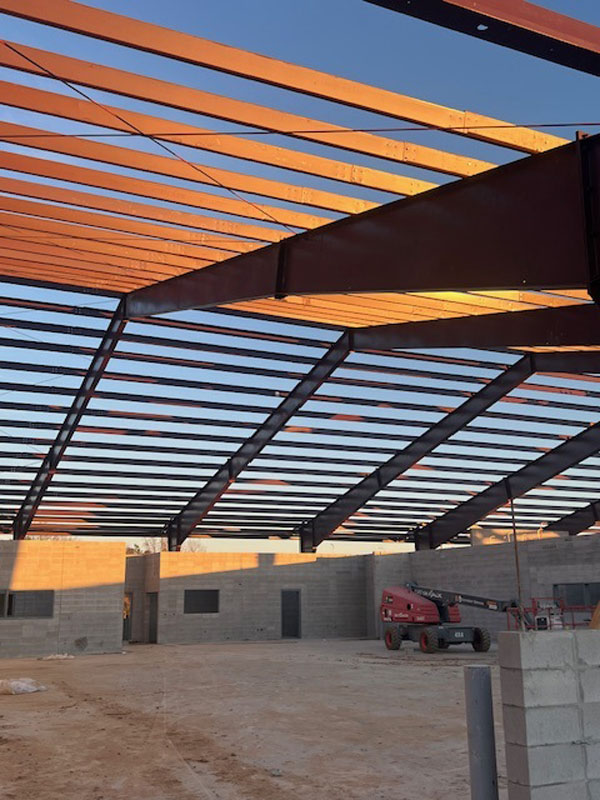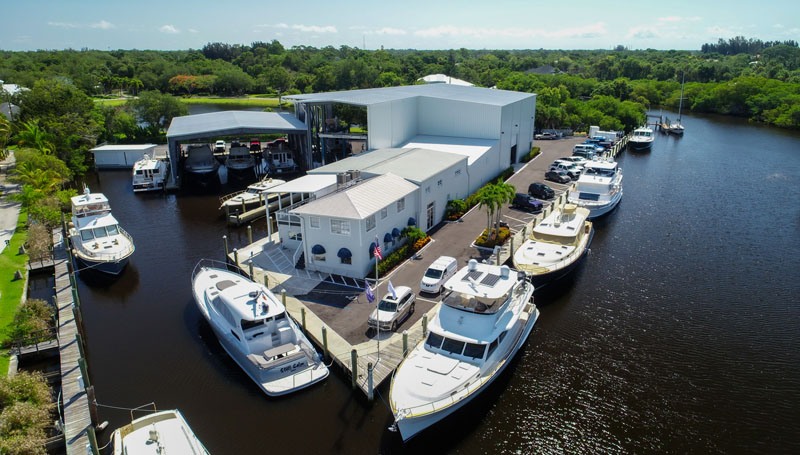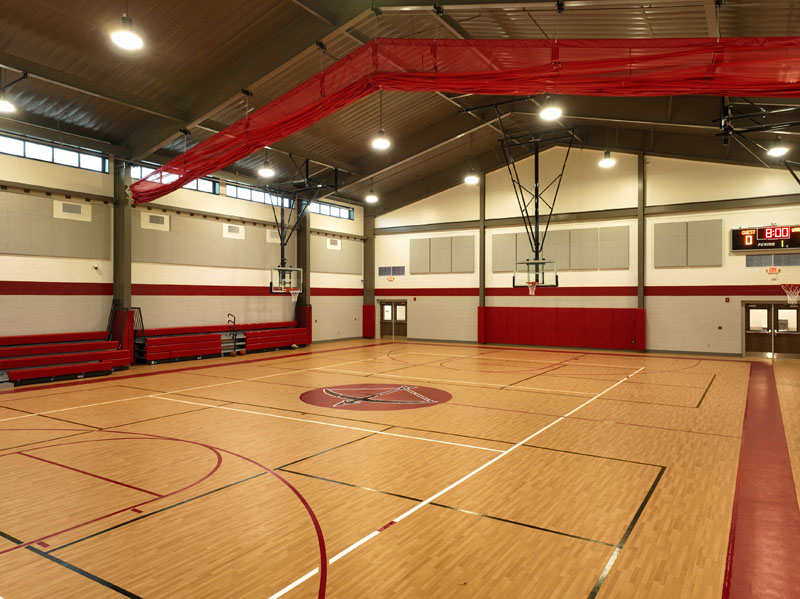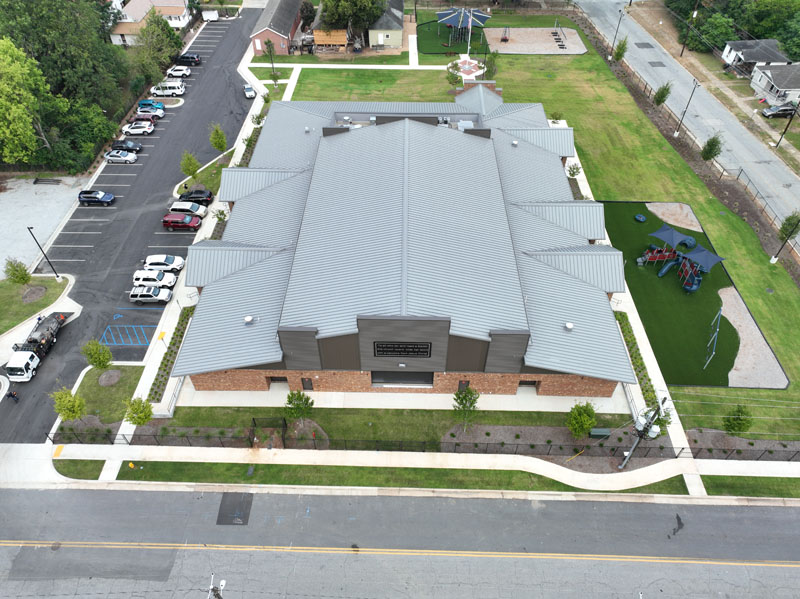The Most Common Metal Building Misconceptions We Hear (Part 2)
We’re back with Part 2 of the most common misconceptions we hear about metal buildings! This time, we’re looking into the strength, durability, and safety of metal building systems.
Aren’t metal buildings weaker than traditional structures?
Think again! Steel is an incredibly versatile and strong building material. Today’s metal buildings are engineered to meet strict, ever-evolving building codes while withstanding severe weather conditions, including hurricanes and heavy snow loads. When it comes to durability, steel is an excellent solution that allows a building to achieve impressive design features while maintaining the overall strength of the structure.

Don’t tapered columns take up all the interior space?
This one is actually the opposite of what most people think, because these columns taper inward, not outward! Tapered columns are engineered to economize the frames by reducing unnecessary steel from the building columns. The frame haunch (the location where the column and rafter connect) is where the majority of loads are imposed on a frame and therefore the thickest part of the column. By tapering the columns inward from the haunch to the base, the floor space increases significantly. Straight columns, on the other hand, would have the same amount of steel at the base of the column as the haunch, because the thickness of the haunch is the driving design factor when it comes to thickness. Tapered columns create space and economic benefits that make them a key feature of metal building systems, versus the mill-shaped, straight beam style of conventional steel construction.

Don’t metal buildings rust?
Metal buildings are exceptionally durable. By using the proper combination of steel and coatings, a metal building can avoid rust issues for years to come. Coatings are an excellent deterrent to rust. Our buildings come with a shop primer but should be field-painted with a finish paint to prevent oxidation of the steel. Additionally, galvanized steel is a very good option to prevent rust. Galvanized framing is typical for open structures that are exposed to the elements such as, coastal buildings, aquatic centers and farm facilities that house livestock.

Won’t a metal building always be too hot or too cold?
If you still picture an empty warehouse or a shed when you think of steel structures, it might be tough to believe that a metal building is just as comfortable as anything you find in traditional construction. High R-value insulation systems and insulated metal wall panels have brought a new level of comfort to these structures, thanks to their ability to regulate temperatures inside the building. These materials also contribute to the exceptional energy efficiency of modern metal buildings.

Aren’t metal buildings loud and dangerous in a storm?
Metal buildings have come a long way in terms of sound dampening, insulation and overall material quality. Rain falling on a professionally manufactured metal building is very different from rain falling on an old tin roof.

So, there you have it! Thank you for checking back in for Part 2 of our metal building misconceptions series. If you missed it, you can catch up on Part 1 here.
Are you ready to begin your next metal building project? Contact us today and be on your way to partnering with a metal building manufacturer with 40 years of experience in the industry.
